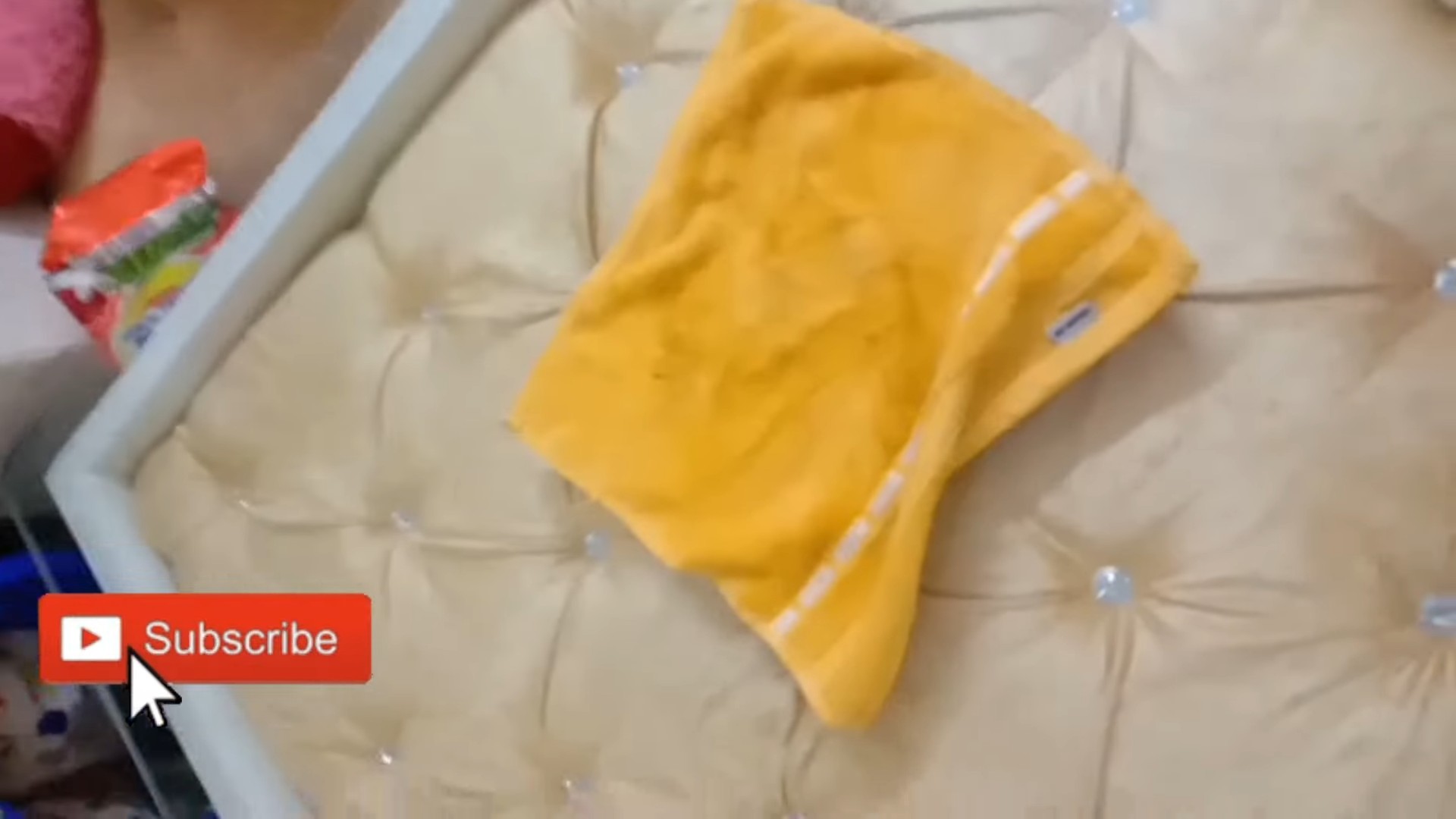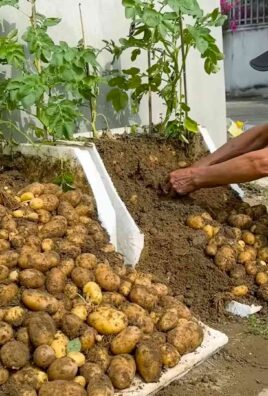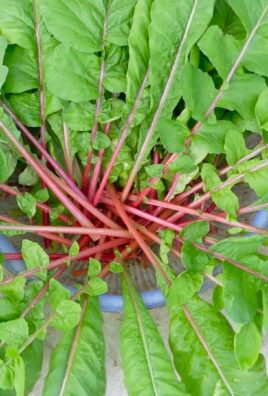Growing radishes without a garden might sound like a gardening paradox, but trust me, it’s totally achievable! I’m here to show you how to enjoy the peppery crunch of homegrown radishes, even if you’re short on space or don’t have a traditional garden plot. For centuries, radishes have been a staple in diets across the globe, from ancient Egypt where they were a common offering to the gods, to modern-day salads and snacks. Their quick growth and adaptability have made them a favorite for gardeners of all skill levels.
But what if you live in an apartment, have a tiny balcony, or simply prefer container gardening? That’s where these DIY tricks come in! Many people miss out on the joy of fresh, homegrown produce simply because they think they need a sprawling backyard. I’m going to debunk that myth and provide you with simple, effective methods for growing radishes without a garden. Imagine adding a burst of fresh flavor to your meals with radishes you nurtured yourself, all from the comfort of your home. This guide will equip you with the knowledge and confidence to start your radish-growing adventure today!

Growing Radishes Indoors: A Garden-Free Guide
Hey there, fellow gardening enthusiasts! So, you’re itching to grow something fresh and peppery, but you don’t have a garden? No problem! Radishes are your answer. These little root veggies are incredibly fast-growing and perfectly happy to thrive indoors. I’m going to walk you through everything you need to know to cultivate a vibrant radish crop right on your windowsill. Get ready for some crunchy goodness!
What You’ll Need
Before we dive in, let’s gather our supplies. This is a pretty straightforward project, so the list is nice and short:
* A Container: This is crucial. You’ll need a container that’s at least 6 inches deep. Radishes need room to grow downwards. I’ve had great success with plastic tubs, terracotta pots, and even repurposed storage containers. Just make sure it has drainage holes!
* Potting Mix: Don’t skimp on this! Use a good quality potting mix. Avoid garden soil, as it can be too heavy and compact, hindering root growth. A mix specifically designed for vegetables is ideal.
* Radish Seeds: Obviously! Choose a variety that matures quickly. ‘Cherry Belle’ and ‘French Breakfast’ are popular choices for indoor growing because they are fast and reliable.
* Watering Can or Spray Bottle: For gentle watering.
* A Sunny Spot: Radishes need at least 6 hours of sunlight per day. A south-facing window is perfect. If you don’t have enough natural light, consider using a grow light.
* Optional: Liquid Fertilizer: A balanced liquid fertilizer can give your radishes a boost, but it’s not strictly necessary.
Step-by-Step Planting Guide
Alright, let’s get our hands dirty (well, not *too* dirty!). Here’s how to plant your radish seeds:
1. Prepare the Container: First, make sure your container is clean. If you’re reusing one, wash it thoroughly with soap and water. Then, fill the container with potting mix, leaving about an inch of space at the top. Gently pat down the soil to create a level surface.
2. Sow the Seeds: Now comes the fun part! Radish seeds are small, so handle them carefully. Sprinkle the seeds evenly over the surface of the soil, spacing them about an inch apart. You can use your fingers or a small spoon to distribute them. Don’t overcrowd them; they need room to grow.
3. Cover the Seeds: Lightly cover the seeds with about half an inch of potting mix. Gently pat the soil down again.
4. Water Thoroughly: This is important! Water the soil gently but thoroughly until it’s evenly moist. You don’t want to flood the container, but you want to make sure the soil is well-hydrated. A spray bottle is great for this step.
5. Find a Sunny Spot: Place your container in a sunny location where it will receive at least 6 hours of direct sunlight each day. Remember, a south-facing window is ideal.
Caring for Your Radishes
Now that your radishes are planted, it’s time to nurture them. Here’s what you need to do to keep them happy and healthy:
1. Water Regularly: Keep the soil consistently moist, but not soggy. Water when the top inch of soil feels dry to the touch. Overwatering can lead to rot, so be careful. I usually check the soil moisture every day.
2. Thin Seedlings (If Necessary): Once your seedlings emerge (usually within a few days), you might need to thin them out if they’re too crowded. This means removing some of the weaker seedlings to give the stronger ones more room to grow. Aim for about an inch of space between each plant. It feels a little brutal, but it’s necessary for a good harvest.
3. Fertilize (Optional): If you want to give your radishes a boost, you can fertilize them with a balanced liquid fertilizer diluted to half strength. Do this every two weeks or so. I find it helps, especially if my potting mix isn’t super nutrient-rich.
4. Rotate the Container: To ensure even growth, rotate the container every few days. This will help all sides of the plants get equal sunlight.
5. Watch for Pests: Indoor radishes are generally less susceptible to pests than outdoor ones, but it’s still a good idea to keep an eye out for aphids or other common garden pests. If you spot any, you can usually get rid of them with a gentle spray of soapy water.
Harvesting Your Radishes
The best part! Radishes are incredibly fast growers, so you won’t have to wait long to enjoy your harvest.
1. Check for Maturity: Radishes are typically ready to harvest in about 3-4 weeks, depending on the variety. The roots should be about an inch in diameter. You can gently brush away some of the soil around the base of the plant to check the size of the radish.
2. Harvest Carefully: To harvest, gently pull the radish from the soil. If it’s stubborn, you can loosen the soil around it with a small trowel or fork.
3. Enjoy! Wash your radishes thoroughly and enjoy them fresh. They’re delicious in salads, sandwiches, or simply eaten raw with a sprinkle of salt.
Troubleshooting
Even with the best care, things can sometimes go wrong. Here are a few common problems you might encounter and how to fix them:
* Leggy Seedlings: If your seedlings are tall and spindly, it means they’re not getting enough light. Move them to a sunnier location or supplement with a grow light.
* Slow Growth: Slow growth can be caused by a number of factors, including insufficient light, poor soil, or lack of water. Make sure your radishes are getting enough light and water, and consider fertilizing them.
* Cracked Radishes: Cracked radishes are usually caused by inconsistent watering. Make sure you’re watering regularly and evenly.
* Bitter Taste: Radishes can become bitter if they’re left in the ground too long. Harvest them as soon as they’re ready. Also, high temperatures can contribute to bitterness.
Choosing the Right Radish Variety
Not all radishes are created equal, especially when it comes to indoor growing. Here are a few varieties that I’ve found to be particularly well-suited for containers:
* Cherry Belle: This is a classic, reliable variety that’s known for its bright red color and mild flavor. It matures quickly and is very easy to grow.
* French Breakfast: This variety has a slightly elongated shape and a mild, peppery flavor. It’s also a fast grower and does well in containers.
* Easter Egg: This variety is a mix of different colored radishes, including red, pink, purple, and white. It’s a fun and colorful addition to any indoor garden.
* Sparkler: This is another fast-maturing variety with a mild flavor. It’s a good choice for beginners.
Optimizing Your Indoor Radish Garden
Want to take your indoor radish growing to the next level? Here are a few tips to help you maximize your harvest:
* Succession Planting: To enjoy a continuous supply of radishes, sow a new batch of seeds every week or two. This is called succession planting.
* Use a Grow Light: If you don’t have enough natural light, invest in a grow light. This will ensure that your radishes get the light they need to thrive.
* Maintain a Consistent Temperature: Radishes prefer cool temperatures, around 60-70°F (15-21°C). Avoid placing your container near a heat source.
* Improve Air Circulation: Good air circulation can help prevent fungal diseases. Open a window or use a small fan to circulate the air around your plants.
* Companion Planting: While you’re mainly focusing on radishes, consider planting them alongside other compatible herbs or greens in a larger container. Chives and lettuce are good companions.
Beyond the Basics: Creative Container Ideas
Don’t feel limited to just a standard pot! Get creative with your containers. Here are a few ideas:
* Repurposed Salad Bowls: Those large plastic salad bowls you’re not using anymore? Perfect for radishes! Just make sure to drill drainage holes.
* Old Buckets: A clean, food-grade bucket can be a great container.
* Window Boxes: If you have a sunny windowsill, a window box is a great way to grow a larger crop of radishes.
* Hanging Baskets: While not ideal for all radish varieties, smaller, round varieties can do well in hanging baskets.
Remember to always prioritize drainage!
Why Grow Radishes Indoors?
Besides the obvious reason (no garden!), there are

Conclusion
So, there you have it! Growing radishes without a garden isn’t just possible; it’s surprisingly easy and rewarding. This DIY trick transforms any sunny windowsill, balcony, or patio into a miniature radish farm, bringing the crisp, peppery flavor of freshly harvested radishes right to your kitchen. Forget the limitations of traditional gardening; this method opens up a world of possibilities for urban dwellers and anyone with limited outdoor space.
Why is this a must-try? Because it’s fast, fun, and incredibly satisfying. Radishes are among the quickest vegetables to mature, meaning you can go from seed to salad in as little as three to four weeks. Imagine the joy of harvesting your own vibrant red globes, knowing you nurtured them from tiny seeds to deliciousness, all without ever setting foot in a garden plot. Plus, it’s a fantastic way to introduce children to the wonders of gardening and the importance of fresh, homegrown food.
But the beauty of this DIY radish-growing method lies in its adaptability. Feel free to experiment with different radish varieties. ‘Cherry Belle’ is a classic choice, known for its bright red color and mild flavor. For a spicier kick, try ‘French Breakfast’ radishes, with their elongated shape and peppery bite. Or, explore the colorful world of ‘Easter Egg’ radishes, a mix of red, pink, purple, and white varieties that add a visual feast to your salads.
Consider using different containers as well. While a simple plastic container works perfectly well, you could also repurpose old buckets, wooden crates, or even fabric grow bags. Just ensure your chosen container has adequate drainage to prevent waterlogging. You can also try companion planting. Plant your radishes alongside carrots; radishes help deter carrot root flies.
Don’t be afraid to get creative with your growing medium. While a standard potting mix is ideal, you can also amend it with compost or other organic matter to boost nutrient levels and improve drainage. Adding a layer of mulch, such as straw or wood chips, can help retain moisture and suppress weeds.
This DIY radish growing trick is more than just a gardening hack; it’s a gateway to a more sustainable and fulfilling lifestyle. It’s a chance to connect with nature, even in the heart of the city, and to enjoy the simple pleasure of growing your own food.
So, what are you waiting for? Grab some radish seeds, a container, and some potting mix, and get ready to embark on your radish-growing adventure. We’re confident you’ll be amazed at how easy and rewarding it is. And once you’ve harvested your first batch of homegrown radishes, be sure to share your experience with us! Post photos of your radish crops on social media using #DIYRadishes and tell us about your favorite ways to enjoy them. We can’t wait to see your radish-growing success stories! Let’s spread the joy of homegrown radishes, one container at a time.
Frequently Asked Questions (FAQ)
What kind of container should I use for growing radishes?
The best container for growing radishes should be at least 6 inches deep to allow the roots to develop properly. A width of 8-12 inches is ideal for planting multiple radishes. You can use plastic containers, terracotta pots, repurposed buckets, or even fabric grow bags. The most important thing is to ensure the container has drainage holes to prevent waterlogging, which can lead to root rot. If you’re using a container without drainage holes, you’ll need to be extra careful with watering. Consider adding a layer of gravel at the bottom of the container to improve drainage.
What type of soil is best for growing radishes in containers?
Radishes thrive in well-draining, fertile soil. A standard potting mix is a good starting point. You can improve the soil by adding compost or other organic matter, such as aged manure or leaf mold. This will provide essential nutrients and improve drainage. Avoid using heavy clay soil, as it can become compacted and hinder root development. A slightly acidic to neutral pH (around 6.0 to 7.0) is ideal. You can test your soil pH using a home testing kit and amend it accordingly if necessary.
How often should I water my container radishes?
Radishes need consistent moisture to grow quickly and develop crisp, flavorful roots. Water your container radishes regularly, especially during hot or dry weather. The soil should be kept consistently moist but not waterlogged. Check the soil moisture by sticking your finger about an inch into the soil. If it feels dry, it’s time to water. Water deeply until water drains out of the drainage holes. Avoid overhead watering, as it can promote fungal diseases. Instead, water at the base of the plants.
How much sunlight do radishes need?
Radishes need at least 6 hours of direct sunlight per day to grow well. If you don’t have a sunny spot, you can supplement with artificial light, such as a grow light. Place the grow light a few inches above the plants and keep it on for 12-14 hours per day. Insufficient sunlight can result in leggy plants and small, underdeveloped roots. Rotate your containers regularly to ensure all sides of the plants receive adequate sunlight.
How long does it take for radishes to grow in containers?
Radishes are one of the fastest-growing vegetables. Most varieties mature in just 3 to 4 weeks. However, the exact time can vary depending on the variety, growing conditions, and temperature. Warmer temperatures generally speed up growth, while cooler temperatures can slow it down. Check the seed packet for specific information on the maturity time for your chosen variety.
What are some common problems when growing radishes in containers?
Some common problems when growing radishes in containers include:
* **Bolting:** This occurs when radishes flower prematurely, resulting in tough, bitter roots. Bolting is often caused by hot weather or inconsistent watering. To prevent bolting, choose heat-tolerant varieties, provide shade during the hottest part of the day, and water regularly.
* **Root rot:** This is caused by overwatering and poor drainage. To prevent root rot, ensure your container has drainage holes and avoid overwatering.
* **Pests:** Common radish pests include flea beetles, aphids, and root maggots. You can control these pests with insecticidal soap or neem oil.
* **Cracked roots:** This can be caused by inconsistent watering or nutrient deficiencies. Ensure you water regularly and fertilize with a balanced fertilizer.
How do I harvest radishes from containers?
Radishes are ready to harvest when the roots are about 1 inch in diameter. Gently pull the radishes from the soil, holding them by the base of the leaves. If the soil is dry, water it before harvesting to make it easier to pull the radishes. Harvest radishes promptly once they are mature, as they can become tough and bitter if left in the ground for too long.
Can I grow radishes indoors year-round?
Yes, you can grow radishes indoors year-round, provided you have adequate light and temperature control. Use grow lights to supplement natural light during the winter months. Maintain a consistent temperature between 60-70°F (15-21°C). Choose varieties that are well-suited for indoor growing.
What are some creative ways to use homegrown radishes?
Beyond salads, homegrown radishes can be used in a variety of creative ways. Try roasting them with olive oil and herbs for a sweet and savory side dish. Add them to tacos or sandwiches for a crunchy, peppery kick. Pickle them for a tangy condiment. Or, use the radish greens in salads, soups, or stir-fries. Don’t discard the greens; they are packed with nutrients and have a delicious peppery flavor.
Can I grow different varieties of radishes in the same container?
Yes, you can grow different varieties of radishes in the same container, but it’s best to choose varieties with similar maturity times. This will ensure that you can harvest them all at the same time. Be sure to space the seeds appropriately to allow each plant enough room to grow.





Leave a Comment